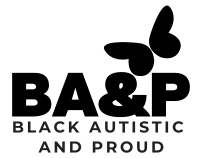AUTISM IS OFTEN MISUNDERSTOOD.

This page aims to:
- Clear up misconceptions
- Reveal the realities of life on the spectrum
- Inspire a deeper understanding of what it means to be autistic

Dear Reader,
We know you mean well. But phrases like “aren’t we all autistic?” or “you could do it if you really tried” can come across as dismissive and invalidating to autistic people. Autism is a complex spectrum disorder, and its traits go far beyond quirks or preferences.
The truth is, autistic people often experience life in ways that are misunderstood or unseen by others, which can make navigating daily life feel isolating and incredibly challenging.
This page is your guide to seeing the autism spectrum clearly. We hope this page will help you understand autism more deeply and empower you to approach autistic people with greater empathy and awareness.
WHAT DOES AUTISM REALLY “LOOK” LIKE?
Autism is a spectrum disorder, meaning no two autistic individuals are alike. While some traits are shared across the spectrum, each person’s experiences, strengths, and challenges are unique.
Social Challenges and Safety Risks
Autistic individuals often struggle their entire lives with navigating social norms and expectations. Struggling with this leaves us vulnerable to mistreatment, including bullying, exclusion, and, unfortunately, sexual trauma. Many of us don’t intuitively understand social cues or “hidden” rules, making it hard to recognize dangerous situations or protect ourselves. The inability to detect harmful intentions and/or manipulation has left many of us with lasting mental, emotional, and physical trauma that impacts us throughout our lives.
Sensory Sensitivities
Bright lights, loud sounds, certain textures, these are not just annoyances. For autistic individuals, sensory input can be overwhelming or even physically painful. This isn’t “being dramatic.” These sensitivities are a real and exhausting part of our daily lives and can affect our ability to function.
Physical Conditions
Many autistic individuals live with conditions like IBS (Irritable Bowel Syndrome), chronic pain, and other physical challenges such as fatigue, migraines, or sleep disorders. Our physical issues can significantly impact our lives and our ability to function effectively on a daily basis.
Processing Differences
The autistic brain is wired differently, which can make changes in our routines or any type of sensory overload deeply distressing. This difference in how we experience the world can profoundly affect our ability to navigate everyday life.
Levels of Support: High Support Needs vs. Low Support Needs
Autistic people have different levels of support needs. Some individuals require daily assistance with tasks like communication, personal care, or navigating routines. These are often referred to as high-support needs autistic individuals. Others may be able to live independently but still require accommodations in areas like employment, sensory management, or social interactions, often categorized as low-support needs autistic individuals.
However, support needs are not fixed. They can change depending on circumstances, stress levels, and environment. Someone who is highly independent one day may struggle with executive functioning the next. The idea that “low-support needs” means someone is fine without accommodations or that “high-support needs” means someone isn’t intelligent or capable is a harmful misconception.
Non-Verbal and Non-Speaking Autistics
Not all autistic individuals communicate using spoken language, but that does not mean they don’t understand or have thoughts to share. Non-verbal (or non-speaking) autistic individuals may use alternative forms of communication such as:
- AAC (Augmentative and Alternative Communication) devices
- Sign language or gestures
- Writing or typing
- Picture exchange systems (PECS)
It’s important to remember that speech is not a measure of intelligence. Non-speaking autistics can have deep thoughts, emotions, and rich inner worlds just like anyone else. Assuming someone has nothing to say because they do not use verbal speech is both dismissive and ableist (ableism: discrimination and social prejudice based on beliefs that typical abilities are superior and that disabled people need to be “fixed”).
TRAITS YOU MIGHT MISUNDERSTAND
Stimming
Stimming, like rocking, hand-flapping, or repeating sounds, helps autistic people self-soothe, manage emotions, and cope with sensory input. It may look unusual to others, but it’s a critical tool for navigating environments. Stimming isn’t “weird,” it’s essential.
Echolalia
Repeating words or phrases might seem odd to others, but for us, it can be a way of processing language, expressing emotion, or even enjoying the sound of certain words.
Black-and-White Thinking
Many autistic individuals see the world in absolutes. Things are either right or wrong, good or bad, with little room for in-between. While this perspective can bring clarity and consistency, it can also make certain situations, like social interactions or tough decisions, more difficult to handle.
Literal Thinking
Many autistic people interpret language literally, which can lead to misunderstandings. For example, we sometimes have difficulty understanding sarcasm, jokes, or common expressions. Miscommunications aren’t intentional; they reflect how our brain processes language.
Executive Functioning Challenges
Many autistic individuals struggle with planning, organization, and initiating or completing tasks. Executive dysfunction is not laziness, it’s a neurological difference that makes seemingly simple tasks (like starting a project or switching between activities) feel overwhelming.
Info Dumping
Sharing detailed information about a favorite subject might seem overwhelming to others, but for autistic individuals, it’s an act of connection and excitement.
Masking
Many autistic individuals mask their traits to fit in socially, which can be exhausting and damaging over time. Instead of encouraging masking, support us as we are.
Elopement
Autistic elopement (or wandering) is often a response to sensory overwhelm, curiosity or a need to escape. While it can pose safety concerns, it’s important to understand that elopement is often about meeting unmet needs, not bad behavior.
INSIDE THE AUTISTIC MIND
Mental Rumination
Autistic brains can become “stuck” on thoughts, replaying situations or conversations and analyzing them deeply for hours.
Auditory Processing Differences
Some autistic people experience delayed auditory processing, meaning they may take longer to understand and respond to spoken words. Others may struggle with auditory overload, where too much sound at once makes it hard to process anything at all.
Rejection Sensitive Dysphoria (RSD)
Many autistic individuals experience extreme emotional distress in response to perceived criticism or rejection. Even a small misunderstanding can feel devastating.
WHY UNDERSTANDING MATTERS
Autistic people deserve to be seen, respected, and understood. Our struggles are rooted in how our brains and bodies work and these challenges are often magnified by factors like race, gender and other aspects of identity.
For Black autistic individuals, racism and ableism (discrimination and social prejudice based on beliefs that typical abilities are superior and that disabled people need to be “fixed”) can combine in ways that make everyday life even more difficult, leading to greater misunderstanding and mistreatment.
Dismissing our experiences undermines our value and trivializes the unique challenges we navigate daily. It’s crucial to understand how these overlapping identities shape the autistic experience and influence how we interact with the world.
HOW YOU CAN HELP
Now that you know these experiences are real and diverse, it’s important to leave behind dismissive phrases and assumptions.
Instead:
- Take the time to listen and learn.
- Validate autistic experiences without judgment.
- Recognize that autistic individuals don’t need to “try harder” to fit in.
When You Know Better
Maya Angelou once said, “Do the best you can until you know better. Then when you know better, do better.”
Let’s work together to create a world where the spectrum is seen clearly, and everyone on the spectrum is respected and understood.
For more resources and support, be sure to check out our Resources page.
